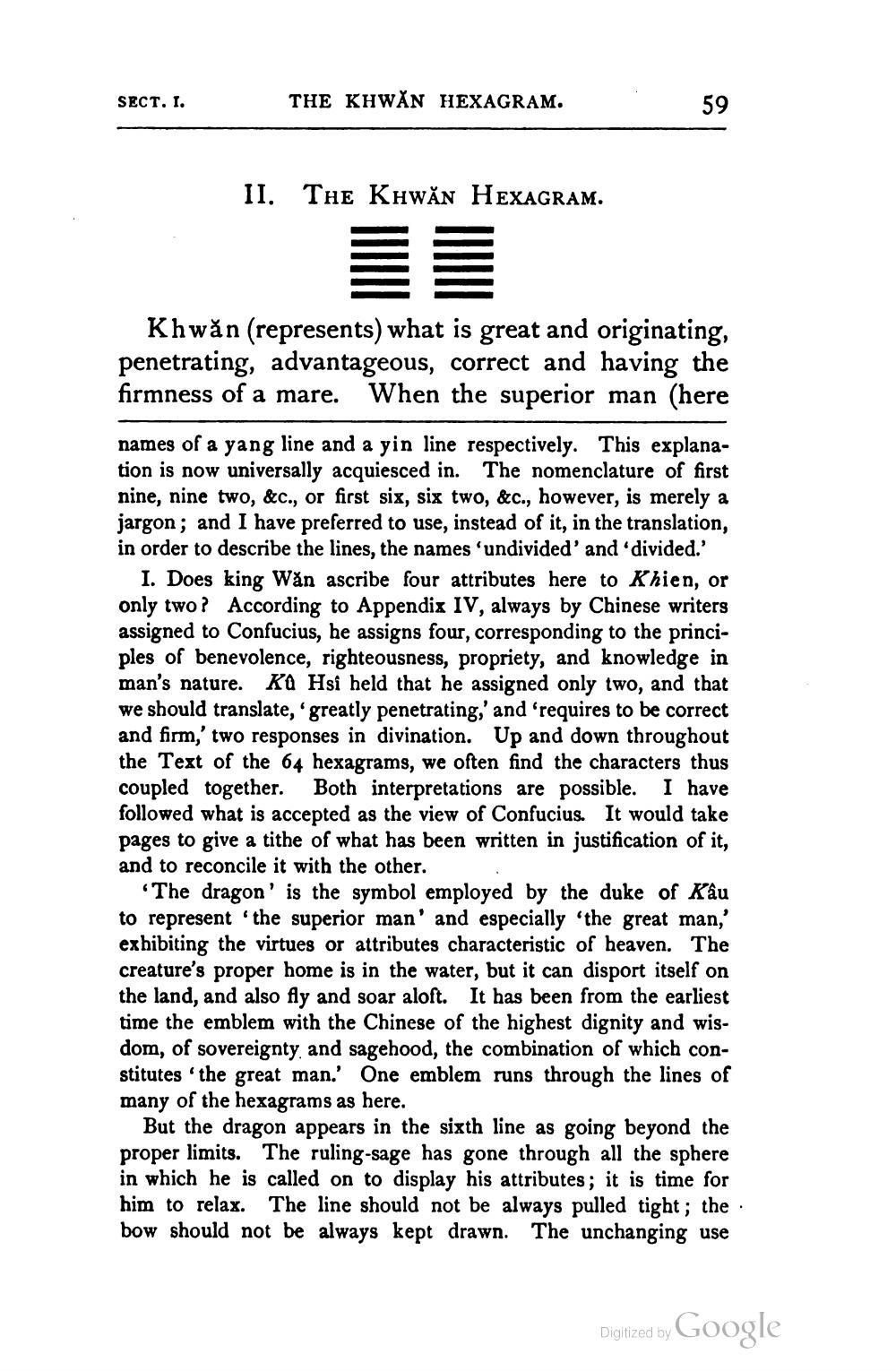________________
SECT. I.
THE KHWXN HEXAGRAM.
59
II. THE KHwĂN HEXAGRAM.
Khwăn (represents) what is great and originating, penetrating, advantageous, correct and having the firmness of a mare. When the superior man (here
names of a yang line and a yin line respectively. This explanation is now universally acquiesced in. The nomenclature of first nine, nine two, &c., or first six, six two, &c., however, is merely a jargon; and I have preferred to use, instead of it, in the translation, in order to describe the lines, the names 'undivided' and divided.'
I. Does king Wån ascribe four attributes here to Khien, or only two? According to Appendix IV, always by Chinese writers assigned to Confucius, he assigns four, corresponding to the principles of benevolence, righteousness, propriety, and knowledge in man's nature. Ka Hsi held that he assigned only two, and that we should translate, greatly penetrating,' and 'requires to be correct and firm,' two responses in divination. Up and down throughout the Text of the 64 hexagrams, we often find the characters thus coupled together. Both interpretations are possible. I have followed what is accepted as the view of Confucius. It would take pages to give a tithe of what has been written in justification of it, and to reconcile it with the other.
The dragon' is the symbol employed by the duke of Kâu to represent 'the superior man' and especially the great man,' exhibiting the virtues or attributes characteristic of heaven. The creature's proper home is in the water, but it can disport itself on the land, and also fly and soar aloft. It has been from the earliest time the emblem with the Chinese of the highest dignity and wisdom, of sovereignty, and sagehood, the combination of which constitutes the great man.' One emblem runs through the lines of many of the hexagrams as here.
But the dragon appears in the sixth line as going beyond the proper limits. The ruling-sage has gone through all the sphere in which he is called on to display his attributes; it is time for him to relax. The line should not be always pulled tight; the . bow should not be always kept drawn. The unchanging use
Digitized by Google




